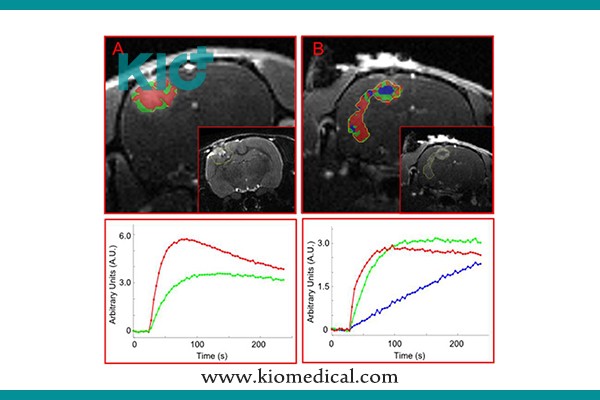Brain mapping
When operating on brain tumors, it is critical to avoid damaging the brain regions responsible for language, motor, and sensory function. While we know which parts of the brain are responsible for these functions (and where they’re generally located), each person’s brain is unique enough that there are slight variations. Depending on how close the tumor is to each of these areas, it may be necessary to make a more precise, patient-specific map of these critical brain regions.
Brain mapping techniques help identify and ultimately preserve vital sites of language, motor, and sensory function. While some information can be gathered prior to surgery (like scans that identify the location of major nerve tracts), additional brain mapping techniques are used during surgery, so that the neurosurgeon can get the most precise, immediate feedback on functional areas of the brain near the tumor.
Awake Brain mapping
Awake brain mapping is the most precise way to identify and protect critical brain regions during removal of a tumor. Patients may need this procedure if their tumors are located near language, motor, or sensory regions of the brain. Having the patient awake during a part of the surgery allows the operating team to monitor active responses from the patient. For instance, language mapping requires patients to answer questions and undergo various speech tests. Motor mapping might include awake tasks like asking a patient to wiggle their toes or tap their fingers. During the awake portion of the surgery, patients will respond to variety of questions while the surgeon applies a small electrical current to the regions of the brain surrounding the tumor.

Asleep Brain Mapping
While awake brain mapping is considered the most precise way to identify and preserve critical brain regions, some types of mapping can be done while the patient is asleep under general anesthesia. Ultimately the recommendation to perform awake or asleep brain mapping depends on many factors, such as size and location of the tumor and patient health. Motor mapping is the most common type of brain mapping that can be done while the patient is asleep. If the tumor is close to regions of cortex responsible for specific muscle groups (e.g., face, arm, hand, leg), this procedure is critical for identifying those regions and preserving the patient’s motor functions. In the same way as awake brain mapping, surgeons use a handheld stimulator to apply a small electrical current to the exposed surface of the brain. However, in asleep brain mapping, the effects of direct stimulation can be observed without needing verbal responses from the patient. Instead, direct stimulation to motor areas of cortex results in muscle contractions within the appropriate body part (e.g. leg, arm). These muscle contractions can be visually observed, but is more robustly detected with electromyography a technique that uses electrodes to measure the electrical activity in each muscle. Using these tools, the neurosurgery team is able to remove as much of the brain tumor as possible, while avoiding critical sites in the brain that control body movement. The recent development of less invasive mapping techniques has provided an appealing alternative or adjunct for many neurosurgeons. Even direct mapping of the primary motor cortex with TMS may not show all of the areas involved in motor performance. Inhibition methods may fail to demonstrate sufficiency. For instance, the disruption of face motor pathways, or even of the temporalis muscle by TMS could cause speech arrest without interfering with language function per se. Finally, diffusion tensor imaging (DTI) while not a functional mapping study, is able to provide information on the location and trajectory of white matter tracts which may inform interpretation of functional brain areas. Thus, it is critical that the neurosurgeon understand the strengths and weaknesses of each approach in order to most benefit from pre-surgical mapping. These brain mapping modalities are rapidly acquiring an expanded clinical role in the surgical planning phase. Each technique is based on different physiological properties thus providing different types of functional maps. Ongoing validation of the brain mapping approaches against each other and against the gold standard methods of Wada testing and intraoperative DCS mapping is particularly important. Quite a lot of work has been done examining agreement between mapping approaches and increasingly examining impact on patient care. All of the brain mapping techniques require dedicated hardware. For many centers, fMRI will require the least capital investment since fMRI can be performed on most modern clinical scanners and technical personnel can be trained in additional skills. fMRI has proven to be a reliable brain map tool that has produced results that closely resembles those of intraoperative brain mapping techniques. DTI can also be acquired in addition to any routine clinical studies.
Brain mapping techniques help identify and ultimately preserve vital sites of language, motor, and sensory function.
brain mapping techniques are used during surgery, so that the neurosurgeon can get the most precise, immediate feedback on functional areas of the brain near the tumor.
Motor mapping might include awake tasks like asking a patient to wiggle their toes or tap their fingers.
